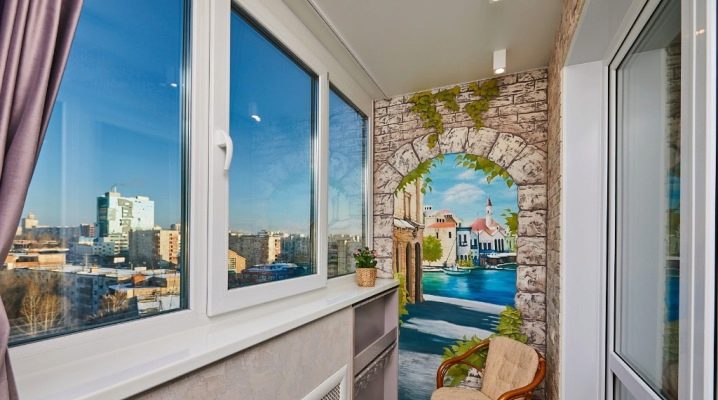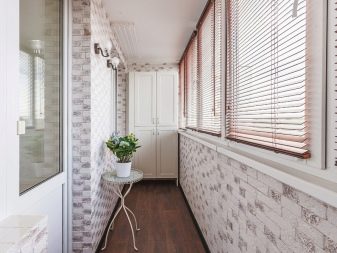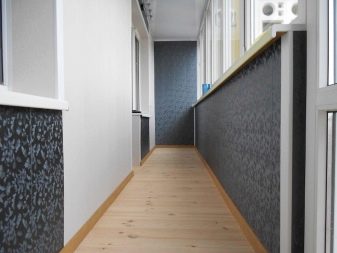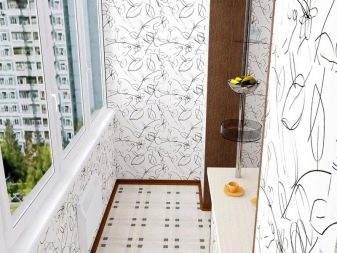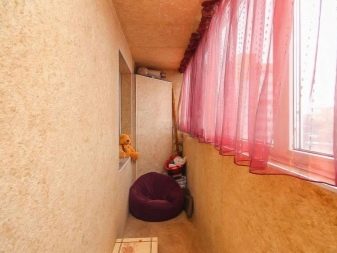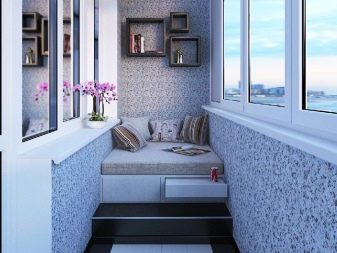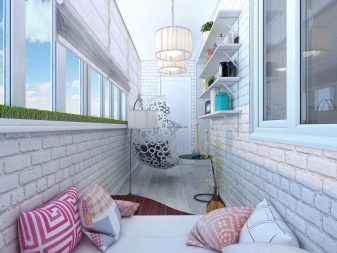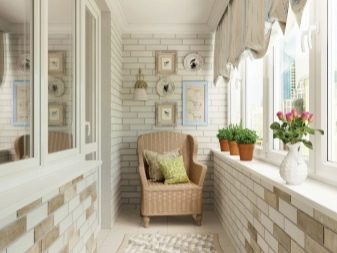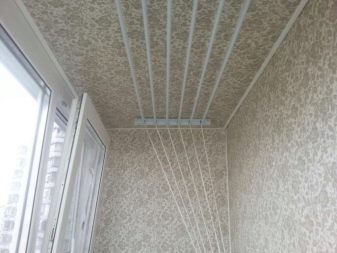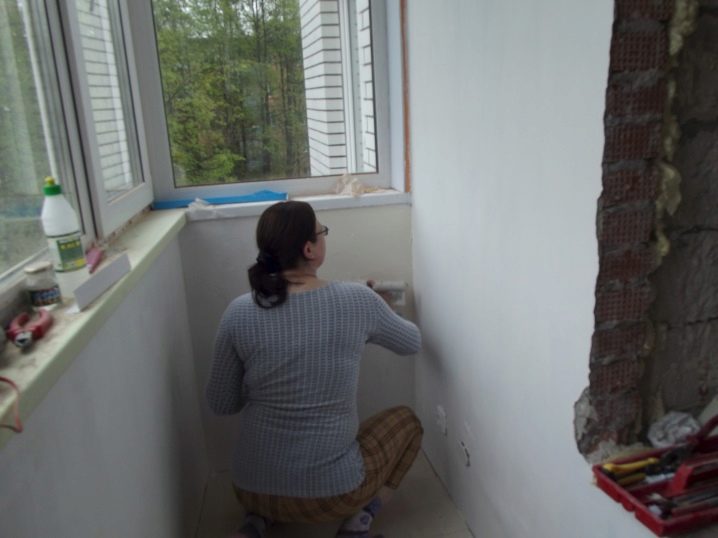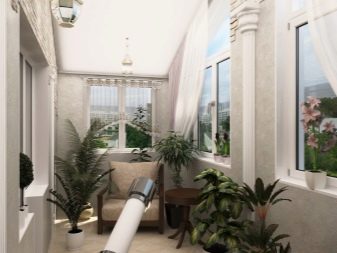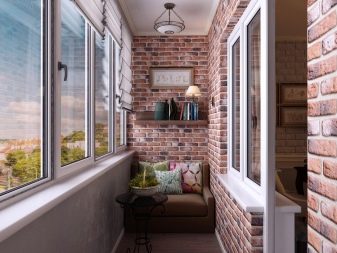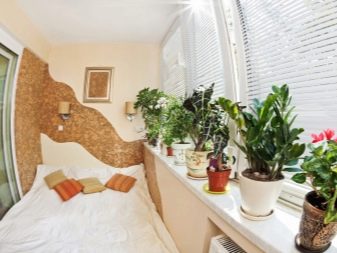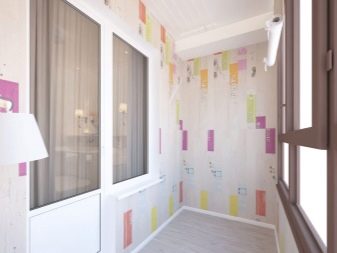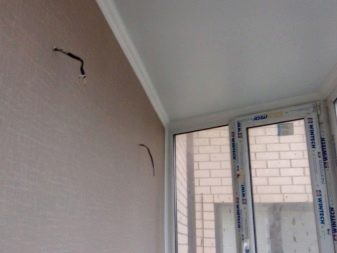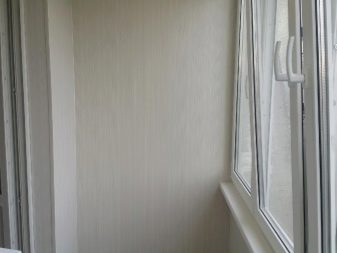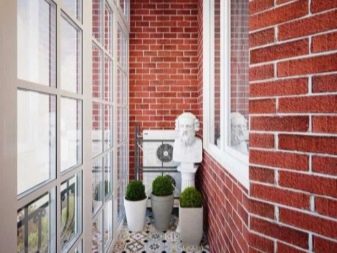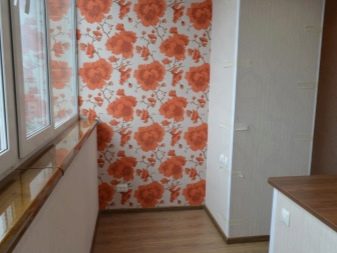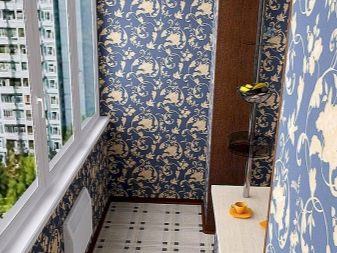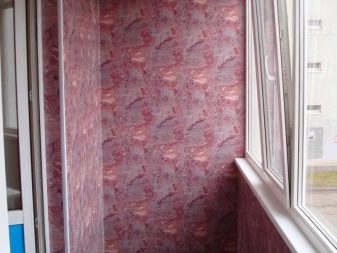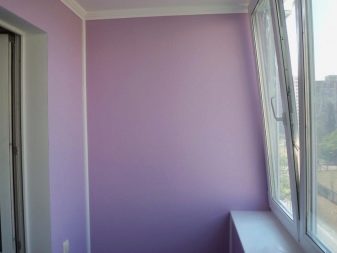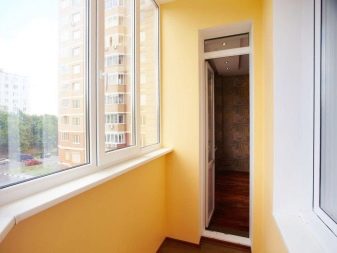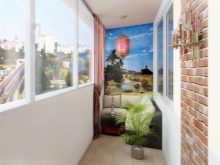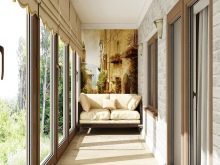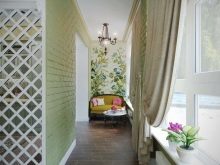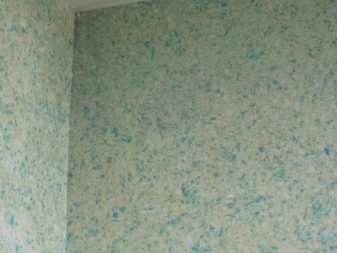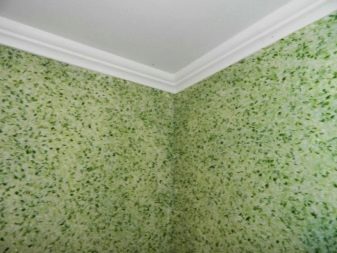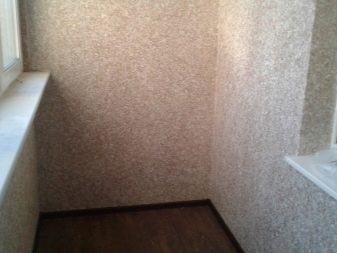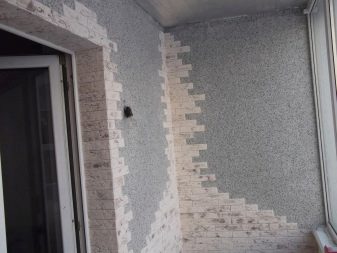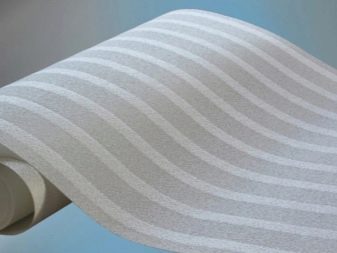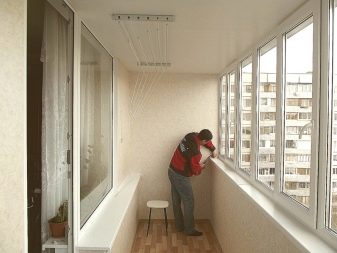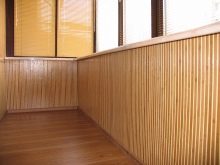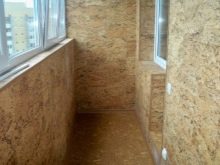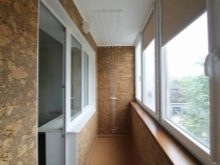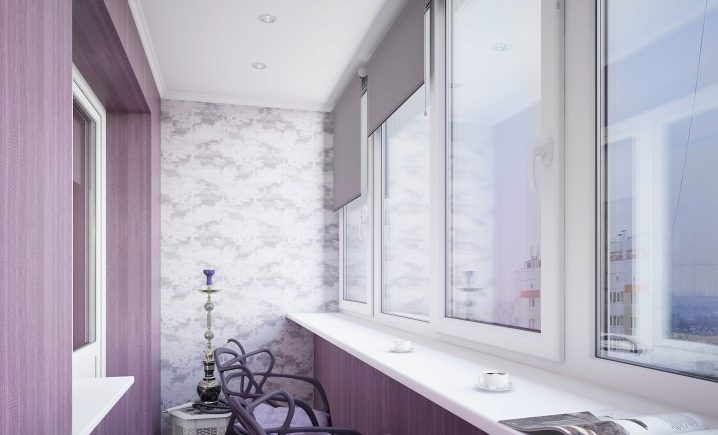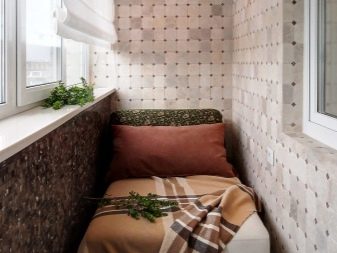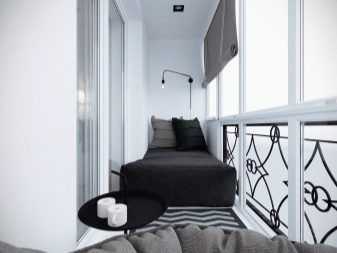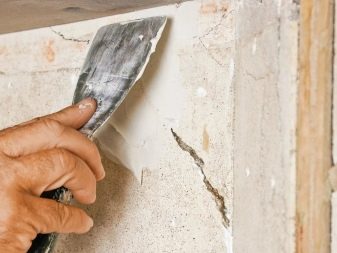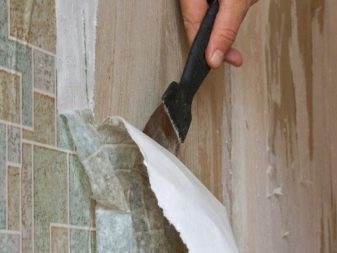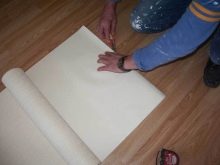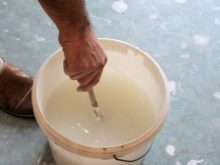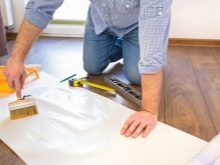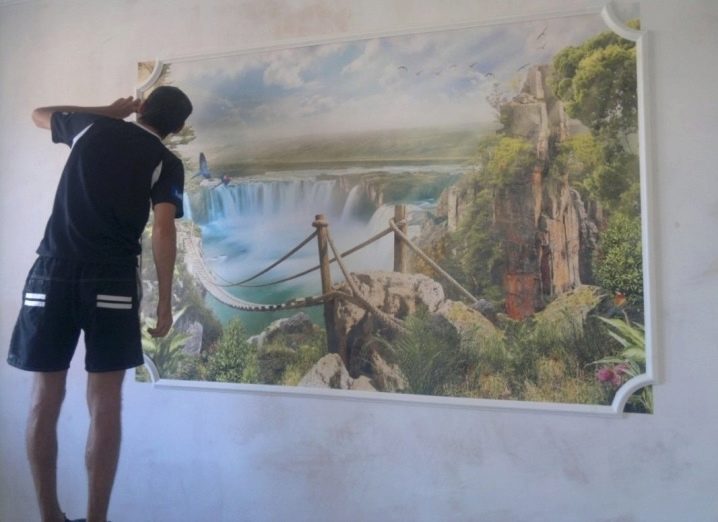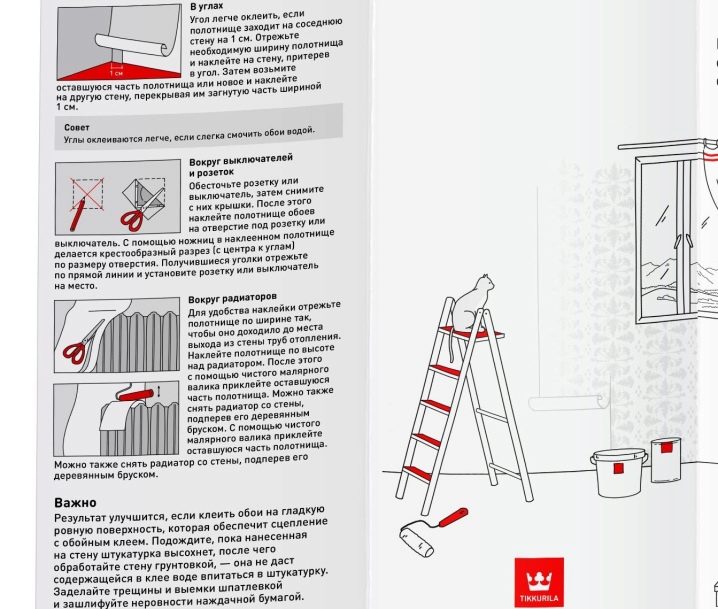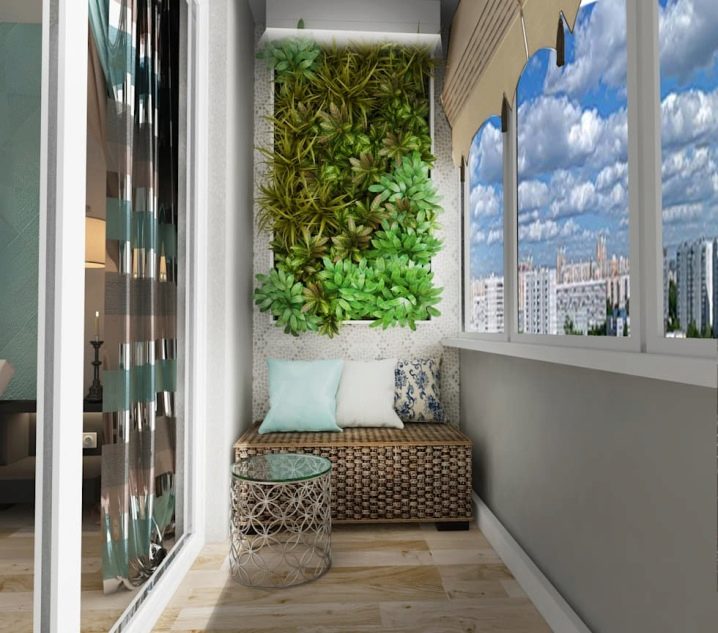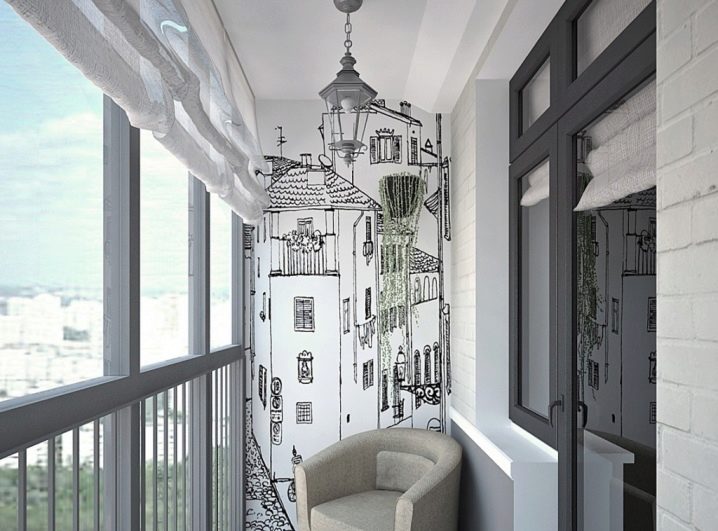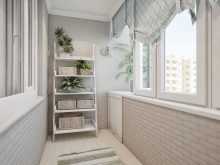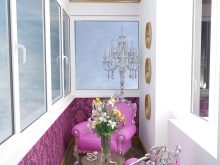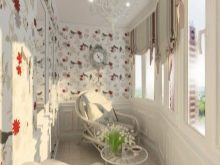What wallpaper to glue on the balcony and how to do it?
Gone are the days when the balcony was a place to store unnecessary and rarely used items or things. Increasingly, this area is insulated, converted into a study or a comfortable place to relax. In this case, when arranging the external room, special attention should be paid to finishing. With the right facing, you can create a cozy and comfortable area for work or leisure.
When decorating walls, clapboard or siding is often used. It is very rare to find wallpaper on the loggias. Many refuse them because they consider such a cladding unsuitable for use in difficult conditions. However, even here you can make cosmetic repairs using paper or vinyl canvases, but when working, it is important to take into account some of the nuances.
Can you glue?
Plain paper wallpapers are in demand among domestic consumers.
They are inexpensive, easy to stick. However, this type of finish is intended for living rooms.
You can also glue wallpaper on the balcony, but you will have to comply with a number of important conditions:
- glaze the balcony, use heat sources in the cold;
- it is necessary to provide for high-quality thermal insulation in the room - to isolate the floors, walls and ceiling in order to exclude the occurrence of a draft;
- an obligatory step is to cover the surfaces with a special compound to prevent the occurrence of fungus;
- it is important to maintain the optimum humidity in the room so that it does not exceed the values recommended by the lining manufacturer.
The use of wallpaper, especially paper types, is not recommended in regions with a harsh climate. Such a cladding is suitable only if the temperature on the balcony in winter does not fall below -5 degrees. At lower temperatures, the canvases may peel off, the appearance of the room will be damaged, and new repairs will be required.
Species overview
Wall-paper on shop windows is presented in a huge assortment: solutions of different design and quality of domestic and foreign production are on sale. To determine the choice of the most suitable option, you need to study in more detail the features, advantages and disadvantages of each type of such a finish.
Paper
The simplest, cheapest and most fragile finish. Its service life is no more than 5-7 years, it directly depends on the operating conditions.
If the balcony is glazed, insulated and heated in cold weather, you can use paper wallpapers, but keep in mind that they will have to be changed soon.
So that repairs are not required again in the coming year, you should choose high-quality brands. Cheap products often peel off, fade under the influence of sunlight and quickly lose their presentability.
Vinyl
This type of finish is a worthy alternative to paper wallpaper. The advantages of this option:
- good resistance to increased moisture, due to which the vinyl cladding can be washed from dust and various contaminants;
- strength, due to which the wallpaper is more convenient to use;
- resistance to ultraviolet rays;
- budget cost.
Vinyl wallpaper can imitate wood, brickwork and other materials - it will not be difficult to choose the right solution. You should not buy cheap products of dubious production - in this case, there are great risks of running into a fake and purchasing goods with low performance.
Non-woven
This is a good option for decorating an outrigger platform.Non-woven wallpaper is often taken for subsequent painting. When exposed to the rays of the sun on the paint, the coating will fade over time, which is why the interior will have to be periodically updated. On non-woven canvases, you can depict a whole landscape.
Their advantages include a dense texture, no shrinkage after drying, resistance to high humidity.
Canvases for painting are allowed to be painted repeatedly, which allows you to quickly and inexpensively refresh or completely renew the interior. High price, difficult care of embossed surfaces, instability of the outer layer against mechanical damage are the main disadvantages of non-woven wallpaper.
Wallpaper
This type of decoration is used when you need to set a certain theme for the interior, bring originality into it, hide small external defects in the base. Photowall-paper is available on paper and vinyl base. When decorating a balcony, it is best to refuse paper-based canvases: they will quickly lose their external presentability, they can come off in drafts or a slight drop in temperature.
High-quality photomurals are expensive, but they are not afraid of moisture, do not fade under the rays of the summer sun and withstand temperature drops with dignity. You can spend money once on a reliable cladding and forget about the next repair for several years.
Liquid
Outwardly, this look does not look like wallpaper, but rather like decorative plaster. This material is well suited for finishing balconies. The liquid wallpaper:
- not difficult to apply to the surface;
- they are durable, reliable and will last for more than one year;
- resistant to high air humidity, well resistant to ultraviolet light;
- improve heat and sound insulation of the external room.
Due to liquid wallpaper, minor surface defects can be masked.
The material is made from environmentally friendly raw materials, so it will not harm the health of households.
One of the significant disadvantages of this finish is the lack of prints.
Glass fiber
This is an expensive type of cladding, which is why it is not in great demand. This material is based on glass yarn, which gives the cladding additional durability and strength. Such wallpapers need to be painted, so when choosing them, you should take into account the cost of purchasing a pigment.
Natural
Bamboo or cork wallpaper is the choice of those for whom environmentally friendly materials that do not contain harmful components are important. Cork lining is suitable only for glazed and insulated rooms, and bamboo can be used on an unheated balcony.
The disadvantages of such a finish include limited design, high cost, and the advantages - good performance characteristics (resistance to ultraviolet light, moisture, mechanical damage).
Selection Tips
When choosing any type of wallpaper, you need to look at the manufacturer.
You should not buy cheap products of dubious production - most often components that are harmful to health are used in its manufacture, and its quality is mediocre.
It is important to choose the right prints and colors of paintings. When decorating balconies, the same rules apply as when decorating walls indoors:
- light colors contribute to the visual expansion of a narrow room;
- dark gamut is able to "steal" space;
- colorful large drawings will reduce the volume of the balcony;
- canvases with stripes will visually stretch or expand the room (depending on the direction of the lines: horizontal or vertical).
It is not worth giving preference to too light cladding, since minor contamination will immediately be visible on it.
How to prepare the walls?
Before gluing the wallpaper, you need to prepare the base. This is an important stage on which the quality of the repair will depend. Preparatory work includes several steps:
- cleaning the walls from the old topcoat, plaster, sealing cracks;
- leveling the wall to give it perfect smoothness;
- covering the base with a primer with antibacterial properties (thanks to its use, the risk of fungus will decrease and the adhesion of the base to the facing materials will increase).
If the balcony or loggia has not been insulated, first of all you need to lay a layer of heat-insulating material.
Stages of gluing
You can glue the wallpaper on a prepared and dried base. To decorate a room, you need to do the following:
- dilute the glue in the proportion indicated by the manufacturer;
- measure the height of the wall from floor to ceiling (not including the baseboard, if any);
- unfold the roll of wallpaper, measure the desired value with a margin of 3-5 cm, cut off the strip (you can cut the entire roll at once, but if the pattern has to be joined, it is advisable to do the marking in stages);
- you need to start gluing from the window;
- apply glue to the canvas from the back side and let it soak, then apply it to the wall, smooth the canvas from the center to the edges, removing air bubbles;
- You can use a soft cloth to line the wallpaper.
When wallpapering a balcony, it is important to eliminate drafts, as they can cause air bubbles to appear.
General recommendations
- When choosing paper, vinyl or non-woven wallpaper, it is important to choose the appropriate adhesive. You need to pay attention to its characteristics - what kind of cladding it is suitable for, leaves traces or not, what temperature it can withstand.
- When decorating walls with non-woven fabrics or fiberglass, it is recommended to apply glue to the wall. Thus, it is possible to achieve an improvement in the adhesion of the material and the base, as well as to facilitate the adjustment of the cuts of the cladding along the seam. You need to glue the wallpaper from top to bottom.
- The liquid wallpaper already contains glue. They should be applied to the wall like plaster using a spatula.
- Photowall-paper is more difficult to glue because of the overall canvas. There are materials divided into fragments, however, due to their large format, they are unlikely to be suitable for finishing typical balconies. If the wallpaper is self-adhesive, you need to remove the protective film gradually, smoothing the canvas and expelling air bubbles with a rubber spatula.
It is not recommended to carry out finishing work on a hot day. Due to the high temperature when the adhesive dries, the risk of air bubbles formation increases.
To make a quality repair, you need to choose the right materials and follow the detailed instructions from the manufacturer (indicated on the packaging of facing materials and glue).
Examples in the interior
Thanks to the use of wallpaper, you can transform any balcony or loggia beyond recognition and make it a place for a comfortable pastime. Due to the correct choice of color and pattern, it will be possible to create an original design and a homely cozy interior.
Photos clearly illustrate how wallpaper can be used to stylishly and brightly decorate a loggia. For example, the picture below shows how simple but tasteful it is to decorate a wall using photo wallpaper.
The next photo shows how to visually enlarge the space with the help of the correctly selected colors of the canvases.
And a few more successful examples.
How to apply liquid wallpaper to the wall, see below.
